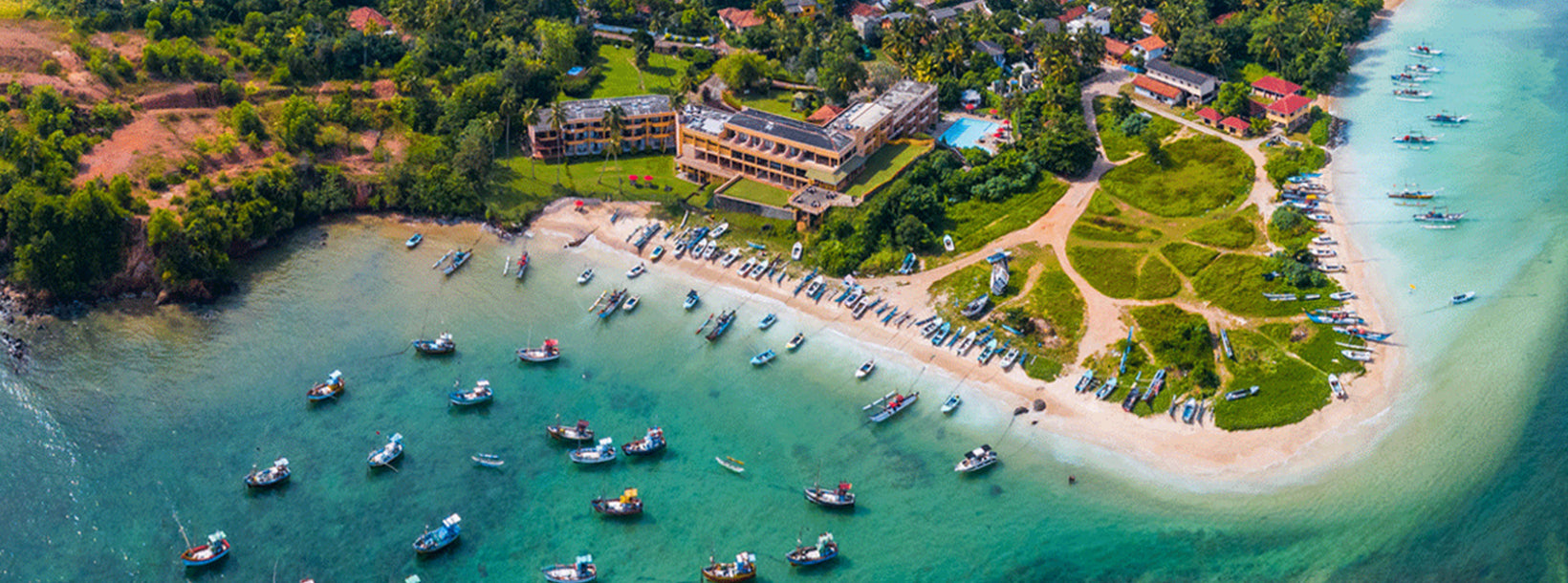
Arugam Bay City
Arugam Bay is a charming coastal town located on the eastern coast of Sri Lanka. Known for its stunning beaches, it's a popular destination for surfers due to its consistent waves. The area also offers a laid-back atmosphere, diverse wildlife, and a variety of accommodations, making it a top tourist spot.
Kudumbigala Monastery
Kudumbigala Monastery in Kudumbigala Sanctuary is an ancient Buddhist monastic complex constructed in 246 BC, during the reign of the King Devanampiyatissa. It is located in the Ampara District of Eastern Province, Sri Lanka. The site is paved with large rock boulders and rock surfaces surrounded by a thick jungle. The monastic complex has been untouched for a long period of time and it was re-discovered in recent past. Archaeologists had recovered over 200 rock caves belonging to this forgotten monastery. According to a rock inscription found in the cave named “Maha Sudharshana Lena” itself, it has been built and offered to Arhats by the Giant Warrior Nandimitra (one of Ten Giant Warriors of King Dutugemunu). The cylindrically shaped stupa located in this monastery is the only one of its kind in Sri Lanka.
In 1994, terrorists belonging to the LTTE hacked to death 17 innocent civilians in Panama. Kudumbigala had to be abandoned immediately as the Government failed to protect the place. Ethnic cleansing, under the cover of the most effective propaganda machine in the world today, has swallowed one third of the Sri Lankan land and 74% of the Sinhalese Buddhists do not even seem to know that. 5% of the Christian Sinhalese do not even seem to care. Today, there is no human habitation around this historic Aranya. Kudumbigala stands, towering in silent splendour, a solitary landmark and witness to the untold stories that get written into landscapes, buried, unearthed and erased yet once again. That is the sad tale of the Sinhalese civilization, which unfortunately do not deserve that fate.
About Ampara District
Ampara is belongs to the Eastern Province of Sri Lanka. It is a remote city on the East Coast of Sri Lanka, about 360 km from the capital city of Colombo. Ampara is the largest paddy harvesting province in the country, and has the Indian Ocean on the east coast of Sri Lanka as a fisheries resource. Most of the civilians are Sinhala, while Tamils and Sri Lankan Moors also live in the coastal parts of the district.
About Eastern Province
The Eastern Province is one of the 9 provinces of Sri Lanka. The provinces have existed since the 19th century but they didn't have any legal status until 1987 when the 13th Amendment to the 1978 Constitution of Sri Lanka established provincial councils. Between 1988 and 2006 the province was temporarily merged with the Northern Province to form the North-East Province. The capital of the province is Trincomalee. The Eastern province's population was 1,460,939 in 2007. The province is the most diverse in Sri Lanka, both ethnically and religiously.
Eastern province has an area of 9,996 square kilometers (3,859.5 sq mi).The province is surrounded by the Northern Province to the north, the Bay of Bengal to the east, the Southern Province to the south, and the Uva, Central and North Central provinces to the west. The province's coast is dominated by lagoons, the largest being Batticaloa lagoon, Kokkilai lagoon, Upaar Lagoon and Ullackalie Lagoon.

















